► Facelifted 2024 Volvo XC90
► Revised interior with new display
► Pricey Swedish seven-seater with 448bhp
The all-electric EX90’s arrival might’ve had some questioning the future of Volvo’s plug-in hybrid XC90, but the Swedish firm has expressed no desire to kill its flagship hybrid SUV. In fact, the brand as affirmed that the XC90 will remain a ‘crucial driver’ of profit over the next few years. So instead of putting the model out to pasture, Volvo has blessed it with a facelift for 2024.
The Volvo XC90 has become something of an icon for Middle England: every inch as popular as the Land Rover Discoverys that came to define the country family set. The styling of the pre-facelift car had been ageing gracefully, and so by the team’s own admission, they didn’t want to mess too much with the formula. In the interests of keeping the loyal clientele on side, while also bringing the XC90 further in line with the futuristic character of its electric counterpart, only a few light tweaks were in order.
Read on for our Volvo XC90 Recharge T8 review to see if the 2023 upgrades have made a difference and whether you should pick this or a BMW X5 45e. And to see what we make of the petrol and diesel versions, don’t miss our regular Volvo XC90 review.
At a glance
Pros: T8 mighty quick, plush interior, luxurious feel
Cons: Cheaper alternatives, Range Rover has longer e-only range
What’s new?
The XC90 T8 hybrid is the most expensive, cleanest, most frugal and quickest car of the XC90 range. Its raison d’être is that it’s a seven-seat plug-in hybrid – something of a rarity still, even in 2024. It’s aimed at the middle classes who can’t quite commit to a fully-electric car, but still want the tax breaks and street cred associated with one. It’s pricey, mind: the cheapest version, the Core, retails from £72,650 and our toppy Ultra version stretches that to £84,150. It’s not cheap.
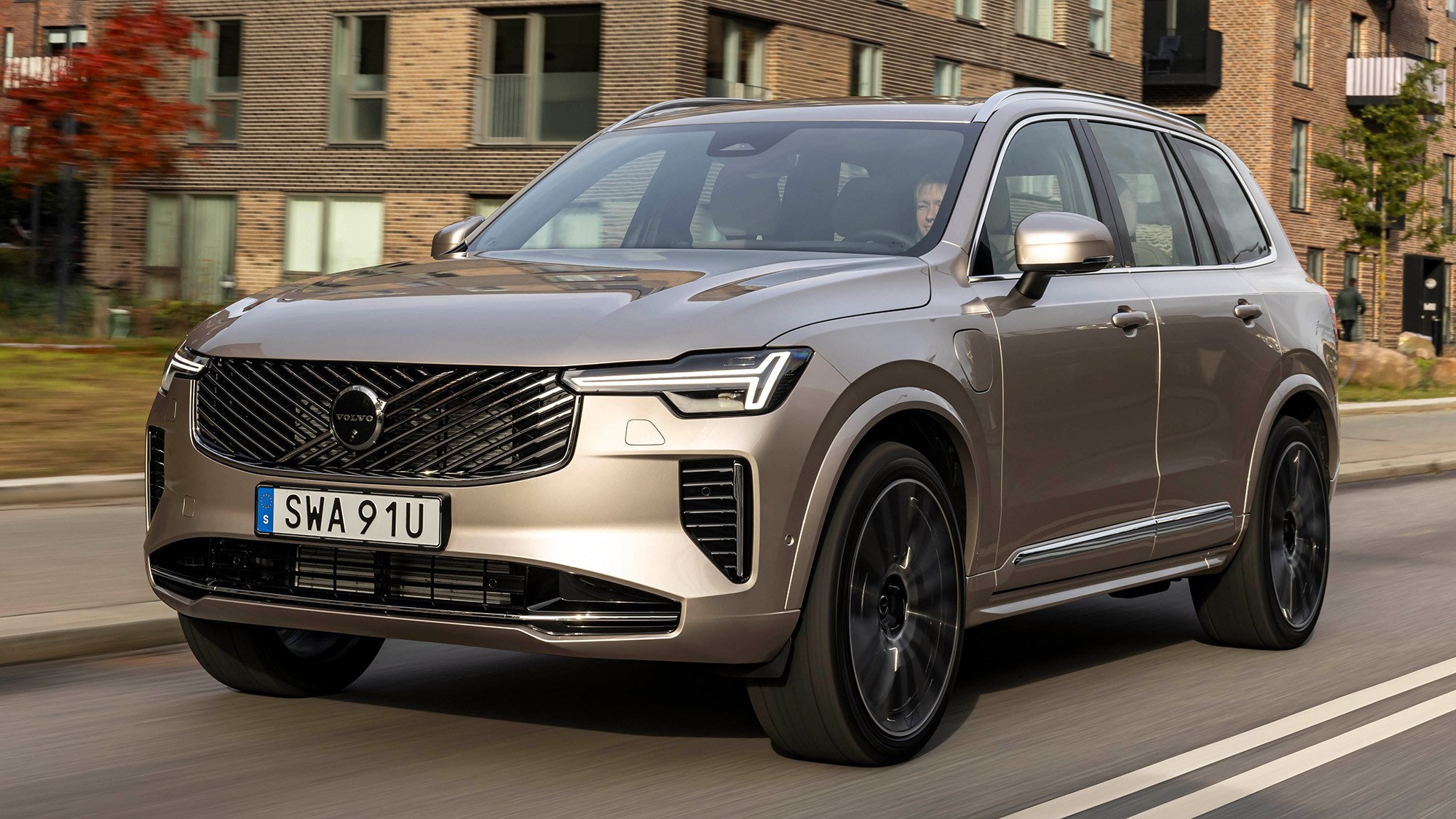
The XC90 uses Volvo’s SPA scalable product architecture. This platform also underpins the S90 saloon and V90 estate, while the chassis was designed from the outset to package electric powertrains. In the T8 a petrol engine in the nose drives the front wheels via a very smooth-shifting eight-speed auto gearbox. A electric generator sandwiched between the two rapidly cranks the petrol engine into life, boosts torque and charges the battery as required.
For 2024, Volvo has updated the car’s exterior slightly, with a new grille and sleeker hammer-shaped headlights to match those of the brand’s latest crop. The interior has also been tweaked – not by enough to alienate the brand’s existing clientele, but with just a few touches to elevate the setting. The infotainment display is still portrait, only now a little bigger at 11.2 inches, while new storage spaces are present inside for even greater practicality.
What are the specs?
The T8 plug-in hybrid XC90 produces a total of 448bhp from a combination of its combustion and electric power. With all that grunt, the T8 can hurl itself to 62mph from zero in just 5.4 seconds, but it’s limited to a top speed of 112mph. According to Volvo, it has an e-only range of between 42.3 and 44.1 miles, owing to its 18.8kWh battery size and 2.9-3.2 miles/kWh official efficiency rating. The T8 is 4,953mm long, 2,140mm wide with the mirrors extended and 1,772mm tall – slightly shorter than the mild-hybrid B5 – while its towing capacity is rated at 2,400kg.
How does the XC90 drive?
There’s effortless performance throughout the rev range, rather than dragster punch. Mash throttle to carpet in Power mode and the T8 launches pretty smartly, the battery pouring power into the electric motor as the turbocharged and supercharged direct-injection 2.0-litre four slogs its guts out. As a performance powertrain it’s undoubtedly effective, the claimed 5.1sec 0-62mph feeling entirely believable, but the car’s not inconsequential weight (2297kg) blunts the feeling of performance.
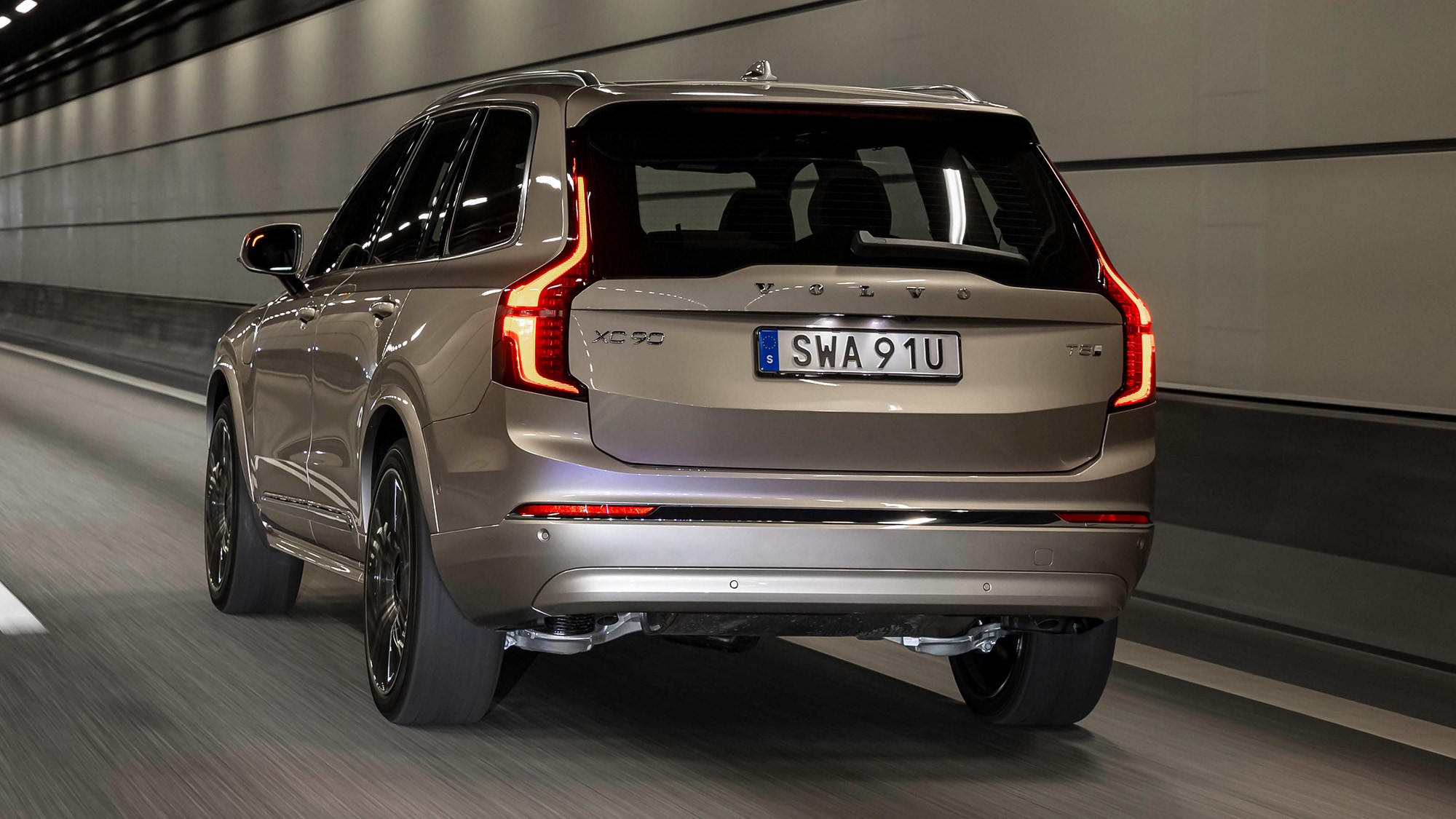
This kind of heavy-footed tomfoolery also feels pretty inappropriate, not because the chassis can’t cope – far from it – but because the petrol engine’s strains lack charm, shattering the XC90’s otherwise very endearing serenity. This is a big car that prefers to mooch around, rather than be thrashed. As you might expect for a large, seven-seat SUV.
Volvo insists a more sonorous, higher cylinder count would have been incompatible with the firm’s product architecture and the wants of environmentally responsible consumers. Certainly the four-cylinder engine contributes much to the T8’s headline figures of 28-34g/km of CO2 and 188-235mpg on the WLTP combined cycle, though having driven several XC90 Recharge T8s, we can safely say the latter is an almost impossible figure in real-world driving.
The obscene three-figure MPG rating is synonymous with the plug-in hybrid car genre. We reckon if you charged religiously, and never drove more than 100 or so miles, the figure might be just about achievable. But the real hindrance to the XC90 is that when the battery is bereft of charge, you’re realistically looking at a sub-30mpg car.
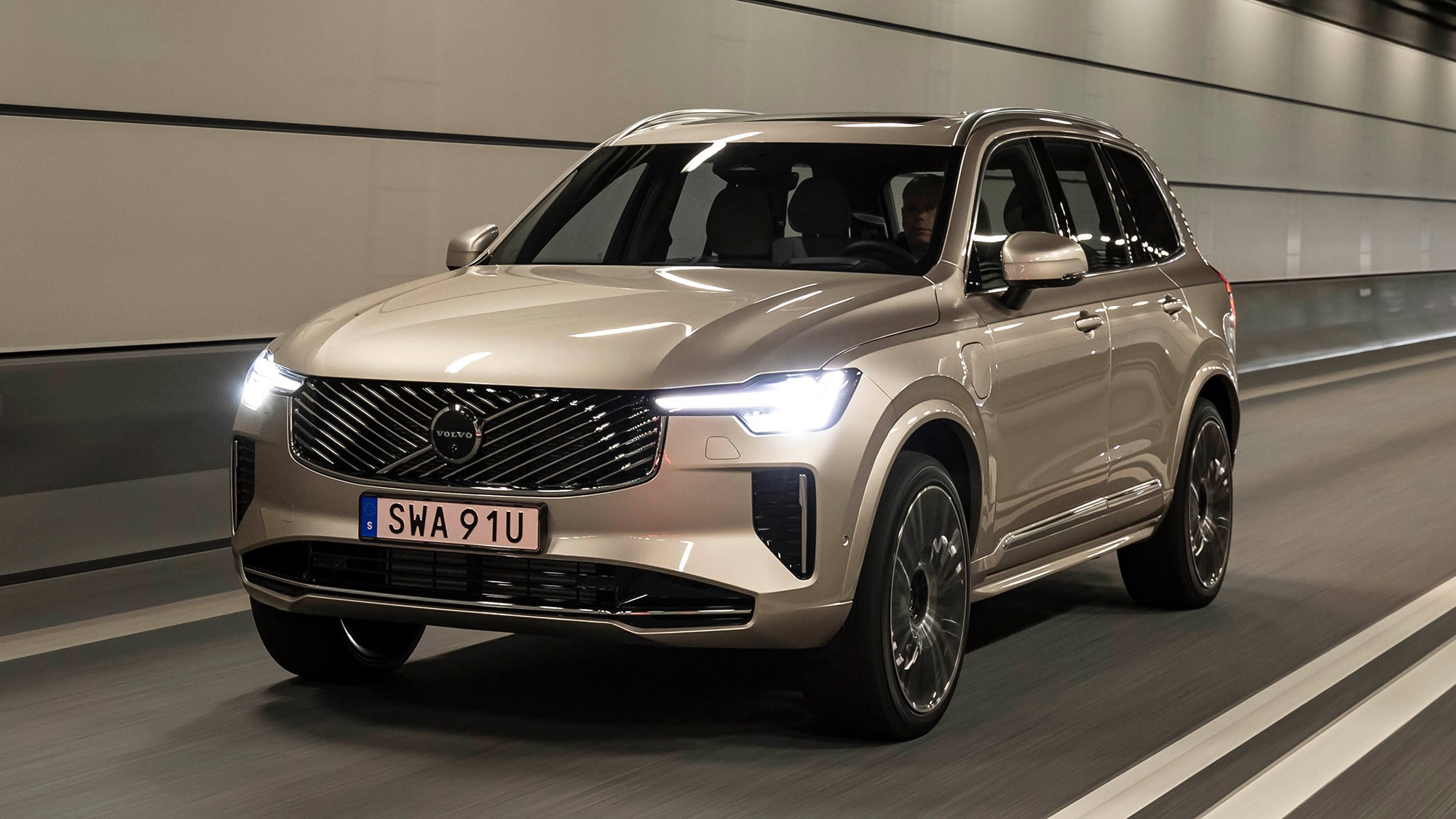
Air-suspended XC90s deliver an impressive drive, blending a cosseting ride with shrewd body control. Appropriately there’s a little initial roll before the outer air struts take up the slack, lending the 5m-long seven-seater the wieldy feel of something much smaller and lighter.
Conventionally sprung XC90s manage a good impression of the same body control, but lose a good deal of the ride quality, occasionally running out of answers on the kind of weather-beaten roads the UK does so well. Our advice is to budget for the air suspension, which also drops the rear of the car by 50mm on demand for the easy loading of heavy furniture and arthritic dogs. A handy feature.
Many Volvo XC90 hybrids come with larger, optional wheels and our test car riding on 21-inch rims was remarkably composed considering the low 40-profile rubber fitted.
What’s it like inside?
Curious timbers, machined aluminium and acres of beige leather don’t sound too promising but, almost irrespective of colour choice, the Volvo XC90’s is one of the finest interiors out there, certainly in anything like a comparable price bracket.
It’s bristling with clever touches: notice the parking ticket holder on the windscreen’s A-pillar; the capless, Ford-era fuel filler; and our test car came in very sustainable woollen upholstery seats. Predictably comfortable (Volvo has always done fabulous seats), We loved them.
The new 11.2-inch display, which comes as standard on all cars, is crisp and clear, while the portrait orientation allows for easy reach to all four corners. No having to stretch out as far as you can to reach the far top left corner at motorway speeds, mercifully…
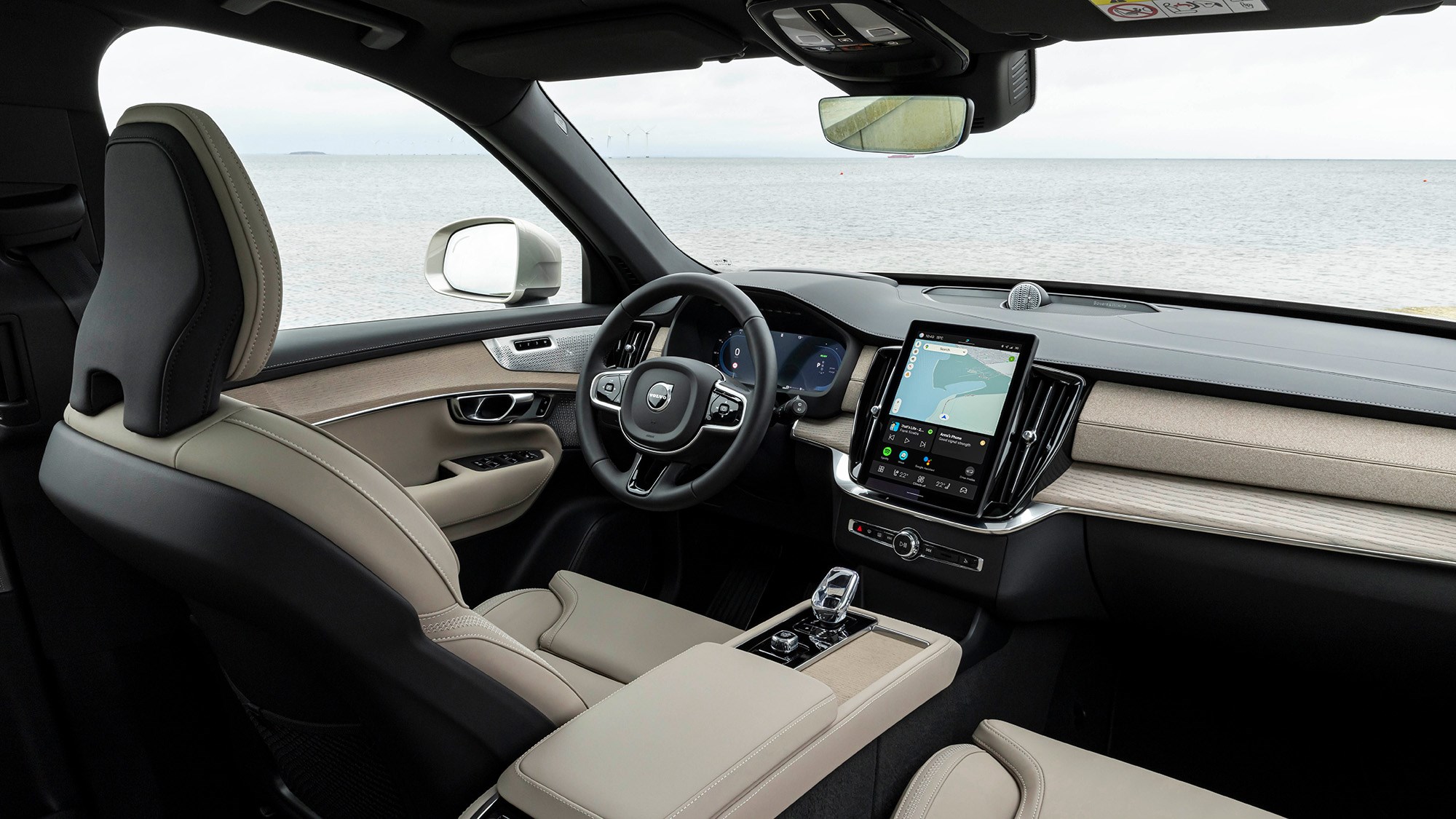
Fit and finish are exemplary, the design striking in a very pleasing, understated way and the overall sense of light, space and uncluttered calm a thoroughly Swedish ambience. Additional noise, vibration and harshness (NVH) work has banished much of the background chatter of fans and compressors a combustion engine’s machinations normally mask, leaving an impressive and luxurious absence of noise.
This helps occupants make the most of the fabulous Bowers & Wilkins stereo; our 2024 car featured the 18-speaker system, which comes as standard on Ultra-spec versions, replacing the 13-speaker Harman Kardon system which now features as standard on Plus models. Audiophiles will approve of its sumptuous, rich sound.
The boot size is deeply impressive (although taller drivers may knock their head on the tailgate… watch out!). Even with all seven seats up, there is still a decent space for a few squashy bags in the back. Flop the third row of pews away (watching the auto-fold headrests concertina away in one smooth movement) and the boot floor is flat.
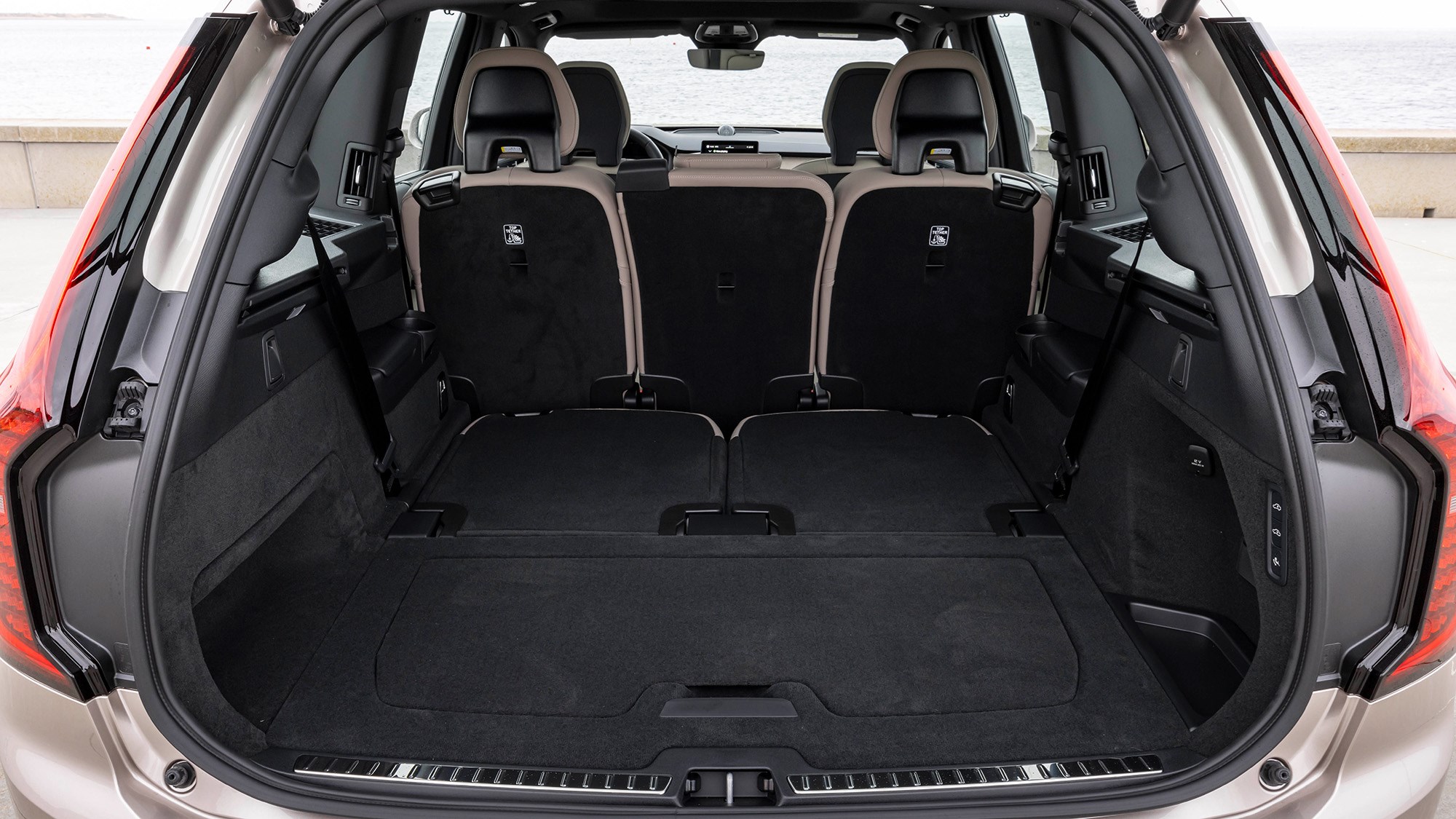
Seats six and seven are suitable for children and smaller adults will be comfy back there for short trips. The front and middle rows are vast, with plentiful space for feet under the front seats and easy access via wide-opening doors.
Volvo XC90 hybrid review: verdict
The XC90 is fundamentally a very fine SUV that is ageing well, and the hybrid powertrain has much to recommend it, not least the tax breaks afforded by its miserly CO2 outputs. And the newly bumped 448bhp combined outputs mean it’s got performance not far off what you might have found in a V8 SUV a decade-and-a-bit ago. The 2024 tweaks aren’t substantial but they serve well in freshening up Volvo’s halo family SUV model.
However, for most people a diesel-engined Volvo XC90 delivers comparable, if not superior, economy, particularly if the battery’s never charged from the grid (50% of its existing PHEV owners don’t plug in, according to Volvo!) but the T8’s potential for both lunging bouts of acceleration and silent electric running is hugely attractive. Much like the car itself.
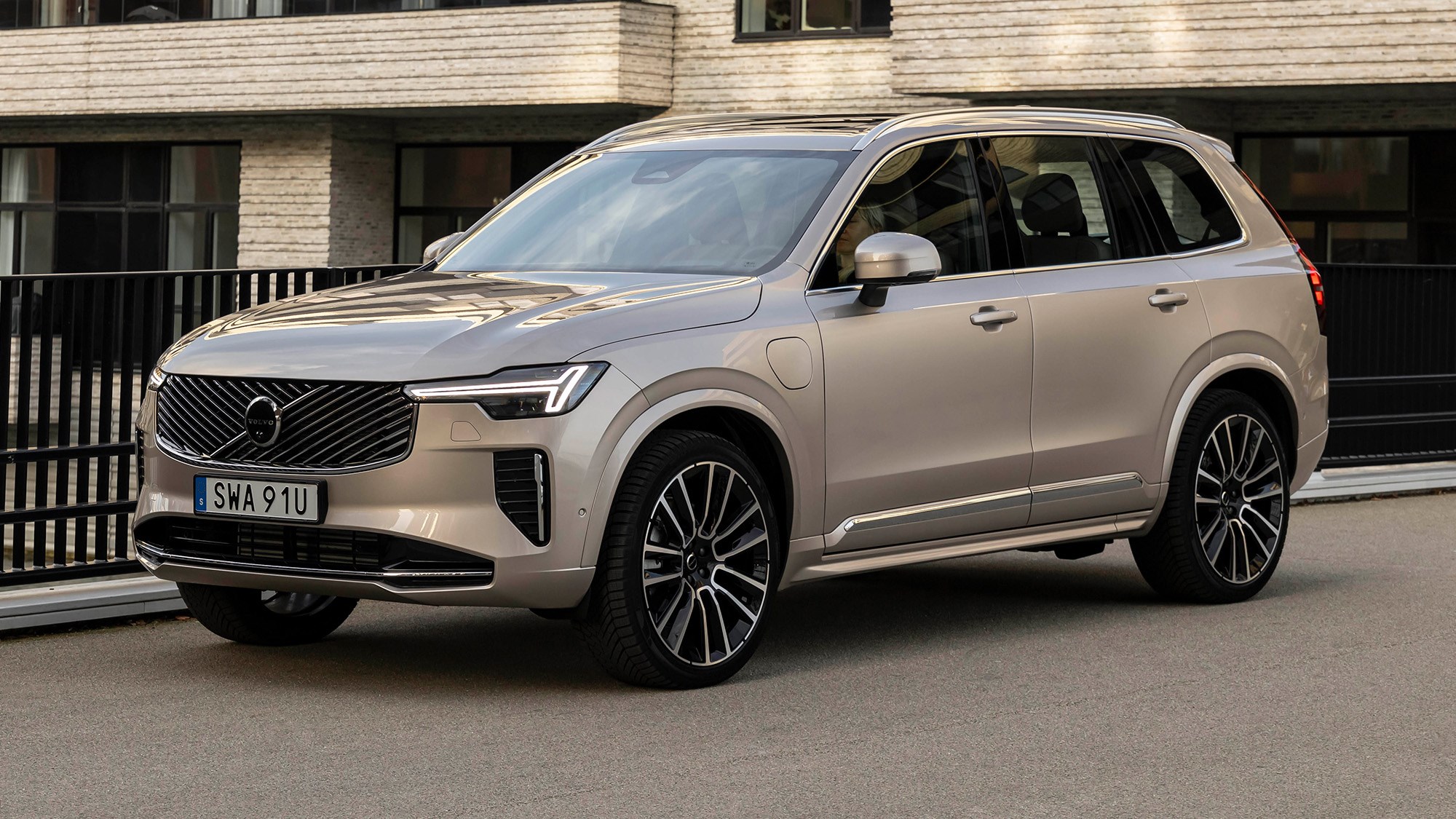
Since being launched in 2015, other manufacturers have caught up by offering plug-in hybrid SUVs. Audi, Range Rover and BMW all have these in their arsenal – and all are newer than the XC90, the elder statesman of this sector. Yet, the XC90 still delivers in being devastatingly fast and handsome, and nowhere near as audacious and flashy as its European rivals. Volvo keeps fettling and updating it, helping the XC90 feel like something of a cut-price Range Rover – and that is praise indeed.
Read CAR’s long-term test of Volvo’s V60 Plug-in Hybrid